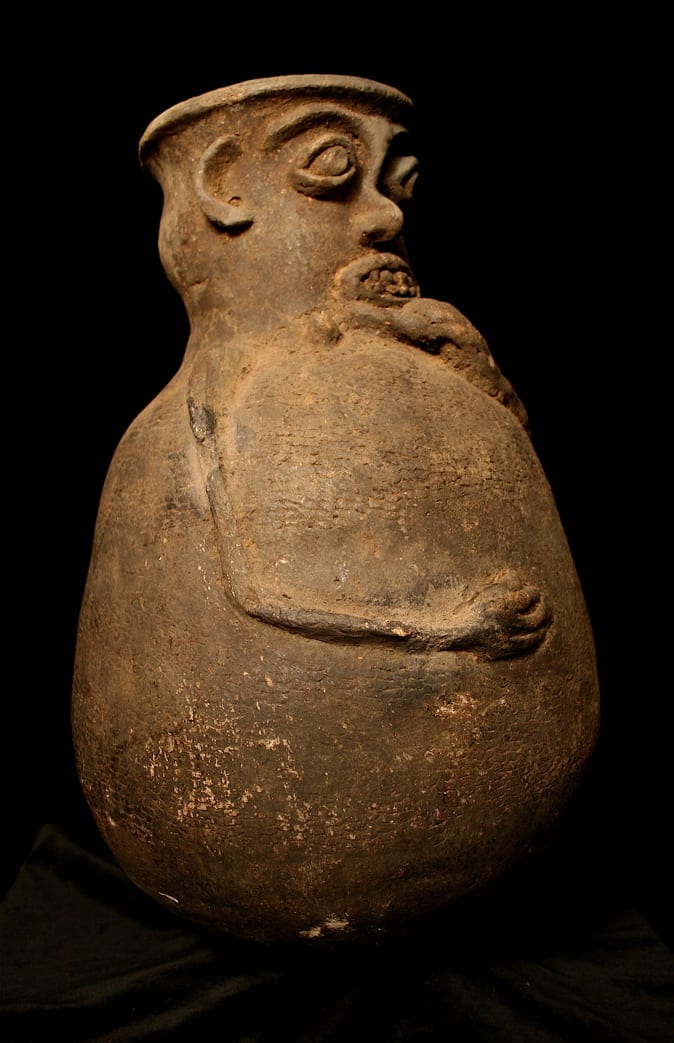Ewe or Fon Anthropomorphic Jar, 20th Century CE
Terracotta
17.25
DA.6939 (LSO)
This impressive anthropomorphic vessel was made by one of the peoples along the Coast of Guinea in what is currently known as Ghana. It is a simple form, with a...
This impressive anthropomorphic vessel was made by one of the peoples along the Coast of Guinea in what is currently known as Ghana. It is a simple form, with a rounded base, inwardly-sloping sides and a vertical neck that bears a human face. The ground of the vessel is plain except for light texturing of the ceramic, and the long, thin arms that extend towards the navel (right) and the mouth (left), where it appears to be holding something towards the open lips. The facial expression is one of surprise, with very large, rimmed eyes, arched brows, a small nose and lips drawn back to expose the teeth. The ears are large and protuberant, and the apex of the face is topped off with the lipped rim, which suggests the form of a hat.
The exact attribution of this vessel is uncertain. It is most likely to pertain to the Ewe or Fon groups, who live in a highly-populated plains area, interspersed with lagoons and woodland. They are largely overshadowed by the neighbouring Asante polity, but have developed a specific artistic style which is evidenced here. The eyes are unusual, and are more characteristic of the Koma, from the Builsa or Koana areas.
As a mainly secular work, thus piece can only be identified to the Ewe/Fon on the basis of stylistic similarity. However, the attribution is largely irrelevant, as this is a striking and impressive piece of African art.
The exact attribution of this vessel is uncertain. It is most likely to pertain to the Ewe or Fon groups, who live in a highly-populated plains area, interspersed with lagoons and woodland. They are largely overshadowed by the neighbouring Asante polity, but have developed a specific artistic style which is evidenced here. The eyes are unusual, and are more characteristic of the Koma, from the Builsa or Koana areas.
As a mainly secular work, thus piece can only be identified to the Ewe/Fon on the basis of stylistic similarity. However, the attribution is largely irrelevant, as this is a striking and impressive piece of African art.



